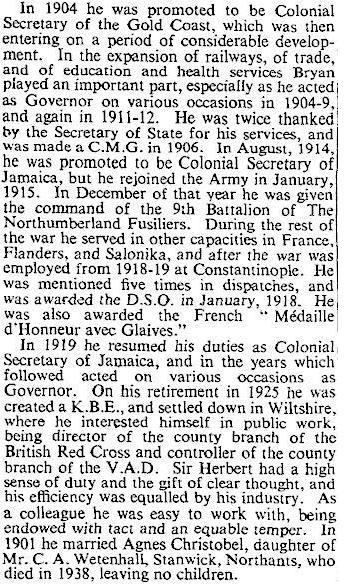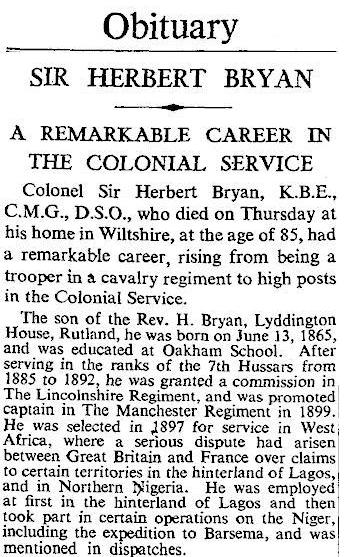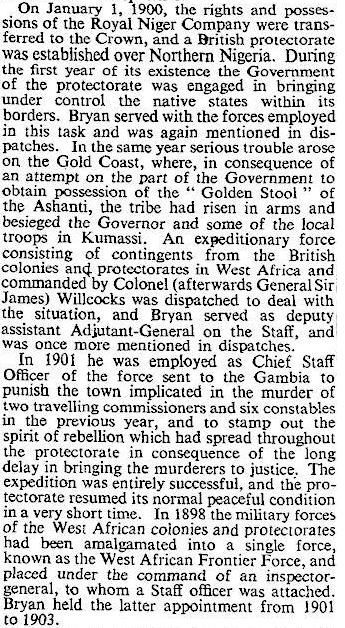-
Posts
1,020 -
Joined
-
Last visited
-
Days Won
1
Content Type
Profiles
Forums
Blogs
Gallery
Events
Store
Posts posted by Taz
-
-
Argentine awards for the "Falklands" War, with critaria and those awarded under the link below.
Ley N? 24.950 ("Heroes Nacionales").
Decreto 577/83 ("Herido en Combate").
Ley N? 25.576 ( "Valor en Combate" Y "Herido en Combate").
Ley N? 24.229 ("Heroico Valor en Combate" y "Valor en Combate").
http://www.fuerzaaerea.mil.ar/conflicto/condecoraciones.html
Ribbons:
http://www.avejer.ejercito.mil.ar/Malvinas...ecoraciones.htm
Regards Eddie.
0 -
Hi Enzo,
Here is an article in the Macedonian tribune, with the badge shown.
http://www.makedonskatribuna.com/
Regards Eddie.
0 -
Snoopy,
Posts 1-2: badge Excellent Service PRIBVO (?)
Posts 3-6: medal 100yrs of Marshal Zhukov's birth
Posts 7-10: medal of Veteran of Labor
Marc
Hi Marc & Snoopy,
Post 1 & 2 would be a badge for Excellent Military service in the PribVO (the former Baltic Military District)
Regards Eddie
0 -
Dear Eddie
- clarify the meaning of bottom swords
All the best
Bryan
Your welcome Bryan,
The sentance should read:
"On the badge various bars could be mounted and on the bottom of the badge, swords"
On the bottom of the badge, below the wording Schlageter, there are crossed swords. These signify that the recipient took part in active fighting.
Rhein/Ruhr badges were awarded without those swords to those imprisoned during the times the fighting took place.
Regards Eddie.
0 -
Wooden tanks were used as training objects. After Amiens (August 8th, 1918), not only the few existing German tank detachments were dispatched for tank familiarisation but also the Quartermaster General was charged with the creation of wooden dummies in huge numbers.
Some were good replicas, others - like the ?tzmann - more phantastic. Some were used as targets for the gunners, others for infantry anti-tank training. In some cases, captured non-running Mk.IVs and Whippets were used as well.
The A7V in the first entry is 507, named "Cyklop" at that time (April 1918).
The A7V replica in Munster is only named "Wotan", in reality it's "Mephisto" (exact copy) fitted with a gun like "Wotan" had one. The real "Wotan" looked different.
Hi Rast,
Thanks for the info on the wooden tanks,

So "Wotan" is "Mephisto?
 Now that is interesting, any idea why it was chosen for the replica?
Now that is interesting, any idea why it was chosen for the replica?Surely it can't be because of the fact it's the only one still remaining, there must be detailed plans etc to build from.
Regards Eddie.
0 -
Online translator give me the feeling of all words...........

Not to worry Bryan, here is a quick translation, best I can do right now i'm a little pushed for time,
Hope this helps you.
The Schlagetershield
Instituted on the 26th May 1933 by the Schlageter memorial foundation in Hannover, as an Honoury Memorial badge for the 10th anniversary.
On the badge various bars could be mounted and on the bottom swords, which signified that the recipient was an active fighter.
Badges without swords were awarded to Rhein and Ruhr prisoners who were charged by a Military court martial, and because they were imprisoned unable to take part in the fighting.
These badges are considered rare and hard to find.
There were 8 Kampfspangen
1. Grenzschutz 1919/20 (Border Security)
2. Baltikum 1919/20
3. Spartakus 1919/23
4. Rhein/Ruhr 1919/23
5. Rhein/Ruhr 1923/24
6. Oberschlesien. 1921
7. K?rnten 1919
8. NSDP 1922/23
The last two are rarer than the others.
There were three types of Schlagetershield
1.Form; Shield-shaped from May 1933
2. Form; Oval from July 1934
3. Form; Round from March 1935
As to why the shield shape was changed three times, it is not exactly known. However there were differences in opinion with the Reichminister and later with the National socialists about the organisation. On the one side it was not a recognised Freikorpstruppe, on the other, the foundation saw itself as a cover organisation of the NSDAP. Even so the NSDAP did not recognise the Schlagetershield as one of their Honoury badges.
In 1936 the Schlageter Memorial Foundation was dissolved and because of the laws on the wearing of Titles, Orders and Honoury medals/badges were no longer allowed to be worn.
Regards Eddie
0 -
Thanks Eddie for taking the time to post, it is appreciated.
I deferred from answering hoping that someone else would answer the question.
I invite any interest to pose the next question.
If not I will post a suitable teaser on your behalf tomorrow if you agree?

Regards Simon
Sure Simon,
I will be offline from Wednesday till at least next Monday so I hope more members respond to this interesting thread.
Best regards Eddie.
0 -
More info in German from Militaria-lexikon.de. If any translations are needed let me know
Das Schlageterschild
Gestiftet am 26.Mai 1933 vom Schlageter-Ged?chtnis-Bund in Hannover, als "Ehren-Erinnerungs-Abzeichen" zum 10j?hrigen Jahrestag.
Die Schilder sind mit "Kampfschnallen" best?ckt, welche den Tr?ger als "aktiven" K?mpfer ausweisen.
Diese Schilde haben dazu auch als Kennzeichnung die aufgelegten Schwerter im unteren Teil des Schildes.
Ohne Schwerter wurden die Schilde an Rhein- und Ruhrgefangene verliehen, die durch ein Kriegsgericht verurteilt wurden und bedingt durch ihre Haft, nicht aktiv am Geschehen teilnehmen konnten.
Diese Schilde sind selten zu finden!
Es gab insgesamt 8 Kampfspangen
1. Grenzschutz 1919/20
2. Baltikum 1919/20
3. Spartakus 1919/23
4. Rhein/Ruhr 1919/23
5. Rhein/Ruhr 1923/24
6. Oberschles. 1921
7. K?rnten 1919
8. NSDP 1922/23
Wobei die letzten beiden Spangen relativ selten auf den Schilden zu finden sind!
Das Schlageter Schild gab es in 3 Ausf?hrungen
1. Form; Schildf?rmig ab Mai 1933
2. Form; Oval ab Juli 1934
3. Form; Rund ab M?rz 1935
Weshalb das Schild dreimal die Form gewechselt hat, l??t sich nicht genau erkl?ren!
Es gab Differenzen zwischen dem Schlageterbund und des Reichministers, sp?ter mit den Nazionalsozialisten, bez?glich dieser Organisation. Einerseits war der Schlageterbund keine anerkannte Freikorpstruppe, anderseits sah sich der Bund als Deckorganisation der NSDAP. Diese erkannte das Schlageterschild dennoch nicht als "Ehrenzeichen" der NSDAP an!
Im Jahr 1936 wurde der Schlageter-Ged?chtnis-Bund aufgel?st.
Das Tragen der Schilde wurde aufgrund des Gesetzses ?ber Titel, Orden und Ehrenzeichen verboten.
0 -
One last Clue.
The survivers were rescued by the HMS Clover and the attack took place 750 miles NNW of Cape Finisterre.
I'll solve this one later today if there are no takers

The answer is: HMS Asphodel (K 56) Flower Class Corvette
She was Part of an escort for combined convoys SL150 from Freetown and MKS141 from Gibraltar with HMS Bayntun and HMS Clover, air cover was provided by HM Escort Carrier Striker.
They came under attack by U-575, 750 miles NNW of Cape Finisterre during which HMS Asphodel was sunk by a GNAT homing torpedo fired by this submarine. HMS Clover rescued the only five survivors from HMS Asphodel.
She was the first allied ship to be sunk by a Snorkel fitted U-Boat but this device was not in use during the attacks.
HMS Clover took part in eighteen hour search for U-575 and carried out depth charge attacks which were unsuccessful.
I was stung by a GNAT!!! But not because of this I was a first. -
The G7es or Zaunk?nig T-5 (wren in German) was a torpedo employed by German U-boats during World War II. It was known as the GNAT (German Navy Acoustic Torpedo) to the British. The torpedo was electric and had an effective range of 5700 meters at a speed of 24 knots (44 km/h). This torpedo employed acoustic, passive homing to find its target after a straight run of 400 meters. The 400 meter limit was employed for safety reasons, even though there were at least two instances of U-boats (U-972 in December 1943 and U-377 in January 1944) sinking after being hit by their own torpedo. This risk was later mitigated by requiring submarines to dive to 60 meters and go completely silent after launching acoustic torpedoes.
The first 80 T-5s were delivered on 1 August 1943, and the weapon was first used in September. A total of 640 were fired in combat, sinking 45 ships. The T-5 was countered by the introduction by the Allies of the Foxer noise maker.
The T-5 was nicknamed Zerst?rerknacker (destroyer cracker) by the German submariners, as it was especially used against convoy escorts.
There were two main variants:
A flat-nosed version which contained two sets of magnetostriction hydrophones.
A round-nosed version which contained two magnetostriction hydrophones inside a funnel-shaped baffle.
Did those who did it have trouble breathing? -
She was the first allied ship to be sunk by a SNORKEL fitted U-Boat
A submarine snorkel is a device that allows a submarine to operate submerged while still taking in air from above the surface. It was invented by the Dutch just before World War II and copied by the Germans during the war for use by U-Boats. Its common military name is snort.
I'll defer for now and let others post a few questions,
Regards Eddie
0 -
Clue 2:
She was escorting convoy SL-150, which was combined with convoy MKS-41. The attack was at 0154 hours on 10th March 1944.
One last Clue.
The survivers were rescued by the HMS Clover and the attack took place 750 miles NNW of Cape Finisterre.
I'll solve this one later today if there are no takers ;)
0 -
Clue 1:
There were only five survivers, from a crew of 97 on this Flower class Corvette
Clue 2:
She was escorting convoy SL-150, which was combined with convoy MKS-41. The attack was at 0154 hours on 10th March 1944.
0 -
Ta Simon,

Next question: A little cryptic

I was stung by a GNAT!!! But not because of this I was a first.
Did those who did it have trouble breathing?
Regards Eddie
Clue 1:
There were only five survivers, from a crew of 97 on this Flower class Corvette
0 -
Ta Simon,

Next question: A little cryptic

I was stung by a GNAT!!! But not because of this I was a first.
Did those who did it have trouble breathing?
Regards Eddie
0 -
Okey dokes, probably not well worded, it was a late night and I am a couple of brain cells lighter.....
V & W-class Destroyer
K, well there was the HMS Vimy and the HMS Verdun,
Was she the Vimy because of her renaming from the Vancouver to enable the name to be used by the Royal Canadian Navy?
The choice of the new name was especially significant as it commemorates the capture of the Vimy Ridge by the Canadian Army in 1917.
Or the most probable answer, HMS Verdun, had the honour of being used to bring the body of the 'Unknown Soldier' from Calais to Dover in 1920 prior to burial in Westminster Abbey as part of the Armistice Remembrance ceremonies that year.
So i'll tip HMS Verdun?
Regards Eddie
0 -
This is probably a give away but very interesting
I was the first ship to carry the name of an heroic WWI defence.
What ship am I and what am I famous for?
Hmm well there was HMS Mons, but that was a tactical retreat rather than a defense.
The class might help ;)
0 -
And part III,
BTW Hi Dave

Best regards Eddie
 0
0 -
-
I've always thought it amusing that the Corps Diplomatique types should have chosen THAT particular portion of their collective anatomy for... embellishment.


The London Times must surely have his 1950 obituary, for those of you who are NOT hopeless at google-searching.
Sir Herbert Bryan Obituary
 0
0 -
I was looking around for an explaination as to what the wooden A7V's might have been.
One theory is also what Lorenzo said, as mock-ups/decoys. The second is that they are real size prototypes to demonstrate the size and dimensions of the actual vehicles to the troops.
Regards Eddie
0 -
Simon, once again grats, it was the HMS Agincourt

I'll explain the cryptic question:
HMS Rust?
 The Giant better have a Gordon's at the palace!
The Giant better have a Gordon's at the palace!Now what's all that about?

HMS Rust, The Giant and The Gin (Gordons) Palace were all nicknames of the HMS Agincourt.
HMS Rust - During 4 month hiatus during building, while sale of ship from Brazil to Turkey was negotiated, ship took on a red patina.
The Giant - Popular nickname in Newcastle, while she was being built.
The Gin Palace - came from her luxurious fittings (which may have led to the original high cost to the Brazilians) and a corruption of her name (A Gin Court), Pink Gin having been a popular drink among Royal Navy officers at the time.
And Clues:
She was nearly Brazilian and Turkish but ended up British.
The Ship with many names, she was laid down as the Rio de Janeiro was then called the Sultan Osman I.
The Royal Navy selected the name HMS Agincourt, after the victory of King Henry V against the French in the 100 Years War.
She was the fourth and last ship in the starboard column of the Grand Fleet (This was the 6th Division of the 1st Battle Squadron)
The 6th Division of the 1st Battle Squadron comprised of HMS Marlborough (flag), HMS Revenge, HMS Hercules and HMS Agincourt.
The photo you posted is also interesting because it shows HMS Erin. This was the second of the two ships originally built for the Turkish navy and was called the Reshadieh before becoming the HMS Erin
Regards Eddie
0 -
Another clue,
She was the fourth and last ship in the starboard column of the Grand Fleet (This was the 6th Division of the 1st Battle Squadron)
0 -
HMS Rust?
 The Giant better have a Gordon's at the palace!
The Giant better have a Gordon's at the palace!Now what's all that about?

A little hint,
She was nearly Brazilian and Turkish but ended up British.
Regards Eddie
0 -
Wooden A7V's :o
 0
0 -
Thanks Eddie, I am glad Christophe and yourself are finding this a pleasant way of learning more about RN history. Indeed the participation and impressive level of questions posed here are testing my knowledge base and I am adding to my repertoire as we go along. As with all things, I am more able in some areas than in others.
Glad you like the questions

Btw there was another question in the post

Regards Eddie.
0





The Argentine Malvinas/Falklands war
in Rest of the World: Militaria & History
Posted
An Osprey book covers the uniforms
Argentinian Forces of the Falklands (Men at Arms), Vol. 250
http://search.barnesandnoble.com/booksearc...N=9781855322271